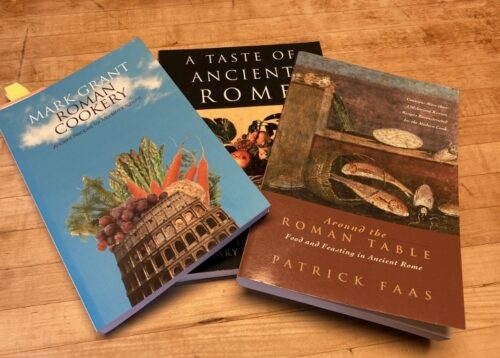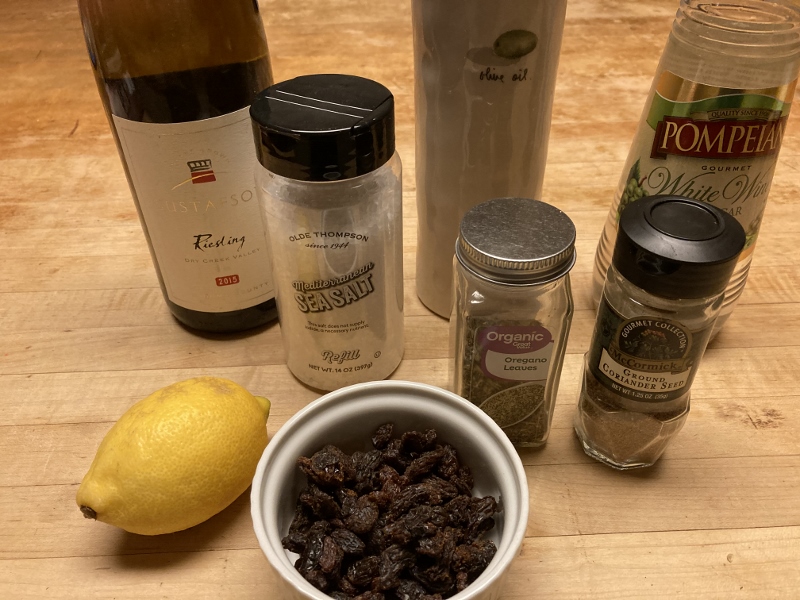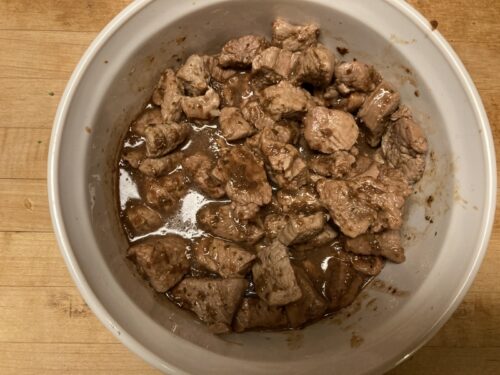Roman cooking in the first century was very different from modern Italian cuisine. Many foods we associate with Italy, such as pasta with red sauce, polenta, and cappuccino were not available to the ancients. Tomatoes and corn, for example, are new world foods, which didn’t arrive in Europe until the sixteenth century.
Also, ancient Romans favored certain herbs that are no longer typical, such as rue (very bitter and potentially poisonous) and sylphium, which they loved so much they ate it into extinction. Another popular flavoring was a salty sauce made from fermented fish called garum. They used is as a condiment and as a common ingredient in sauces and stews.
With ingredients like those, many of the recipes handed down to us by the ancients don’t sound very appealing. I’ll leave it to Livia and her friends to enjoy some of the odder recipes without me.
A few of my Roman cuisine experiments
This page documents my attempts at ancient Roman cooking. I’m basing my experiments on the helpful cookbooks I’ve collected. These scholars have done all the hard work of translating the various original texts that provide us a glimpse into Roman diet and cooking.

All I need to do is choose recipes and try them.
Before we begin, I should mention: A) I don’t follow recipes exactly. I use them as a foundation and then adapt them based on my tastes and what I happen to have in the kitchen. And B) I’ve cut gluten from my diet, which means some of the recipes are further altered.
If you want 100% authentic Roman cuisine, you’ll have to look elsewhere. If you want verisimilitude, read on…
Pork Stew with Raisin Sauce

Romans often combined sweet with savory, such as this stew. The raisins add a subtle sweetness and give the sauce body.
The raisins are soaked in wine vinegar and sapa (reduced sweet wine or grape juice) then pureed and added to the pork stew, which is seasoned with common Roman flavors including vinegar, coriander seeds, and oregano.
The end result was delicious.

I served it with very un-Roman boiled potatoes.
Must Cakes
Must is crushed grape pulp and juice, and was a common sweetener ancient Rome. I attempted to simulate must by using both grape juice and chopped grapes.
In my book, must cake is a favorite of Livia’s aunt. The recipe I tried was adapted from Cato’s writings. It was fairly dense and strongly flavored with cumin, anise, and bay leaf, with only a hint of sweetness. I’m sure the ones Livia purchases at Pansa’s bakery for her aunt are sweeter, flakier, and more subtly flavored.
These savory cakes ended up more like savory cheese biscuits than a dessert cake. They had only a subtle sweetness, and they were strongly flavored with both cumin and the fresh bay leaves that the dough was placed on before baking. They were tasty, but they turned out quite dense. I will try these again someday.

Two of these are turned upside down so you can see the fresh bay leaves. Just baking them on top of the leaves gave a strong bay flavor.
Additional Resources
Food Timeline.org: An informative site on the history of food.
